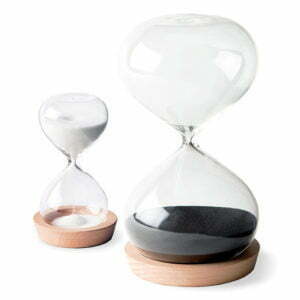As summer officially turns to fall, many homeowners are starting to prepare themselves–and their houses–for cooler weather. Indeed, cranking up the heat during the winter is critical for many families throughout the United States. According to the US Department of Energy, home heating uses more energy than any other residential system and makes up approximately 42 percent of your utility bill.
That means many Americans have a lot of incentive to cut costs whenever possible. Otherwise, you may end up paying a small fortune just to keep your abode comfortable. But short of keeping the temperature set low and wearing parkas indoors, what can you do to reduce your energy usage and your monthly bills? With these tips in mind, you can cut costs without sacrificing your overall comfort.
Install a programmable thermostat
You might think manually lowering your thermostat will be the best way to save money. After all, data shows that you can save as much as 10 percent per year on your heating costs by lowering your thermostat from its normal setting by seven to 10 degrees Fahrenheit for an eight-hour span each day. However, that technique can actually backfire on you in certain situations. If you increase or decrease the desired temperature too much and then have to readjust it later, this will force your system to work harder than necessary–resulting in higher bills.
One of the most effective and easiest ways to save money on heating costs is to set it and forget it. Investing in a programmable thermostat will allow you to automatically adjust temperature settings within your home on a set schedule. That way, the temperature will cool down while you’re asleep or away at work but will be as comfortable as your family needs when everyone is active and at home. The US Energy Information Administration found that one in eight American homes uses a programmable thermostat in conjunction with their air conditioner, so it makes perfect sense (or cents) that it would be a cost-effective way to manage your heating costs, too.
Have your HVAC serviced regularly
Although you may not like the thought of spending money on routine heating maintenance, it can be a great way to save in the long run. Your HVAC technician can catch and address small issues early on, which means you won’t have to pay for new heating installation or major repairs as frequently. Keep in mind that older units will likely have more problems and be less energy efficient, which means your monthly bills will keep rising if you don’t attend to those issues. Putting off necessary repairs will make your system have to work overtime in order to heat your home properly, and all that extra work will show up in undesirable ways when you open your bill each month. In the end, prevention is a much smarter tactic than denial.
Identify and address areas of heat loss
Another way to save money on your energy bills is to figure out where heat is being wasted and take steps to ensure the warm air stays in (and the cool air stays out). Heat often escapes through the attic, basement, or roof, as well as through doorways and windows. Since windows occupy roughly 15 to 20 percent of a house’s walls and are meant to open and close, it’s no surprise that they lose more heat per square foot in the wintertime than any other residential surface. If you can’t afford energy efficient window installation this year, you should consider sealing any leaks you find or using plastic window treatments on single pane windows to minimize heat loss. It’s also possible that your home doesn’t have enough insulation for its size. Although adding insulation will come with a price, you’ll end up saving more over time–and it may even qualify as a tax-deductible home improvement project.
As outdoor temperatures start to cool down, you’ll need to think about your home heating. In order to get the most out of your heating system and to save money this season, take these steps before you turn up the thermostat.









